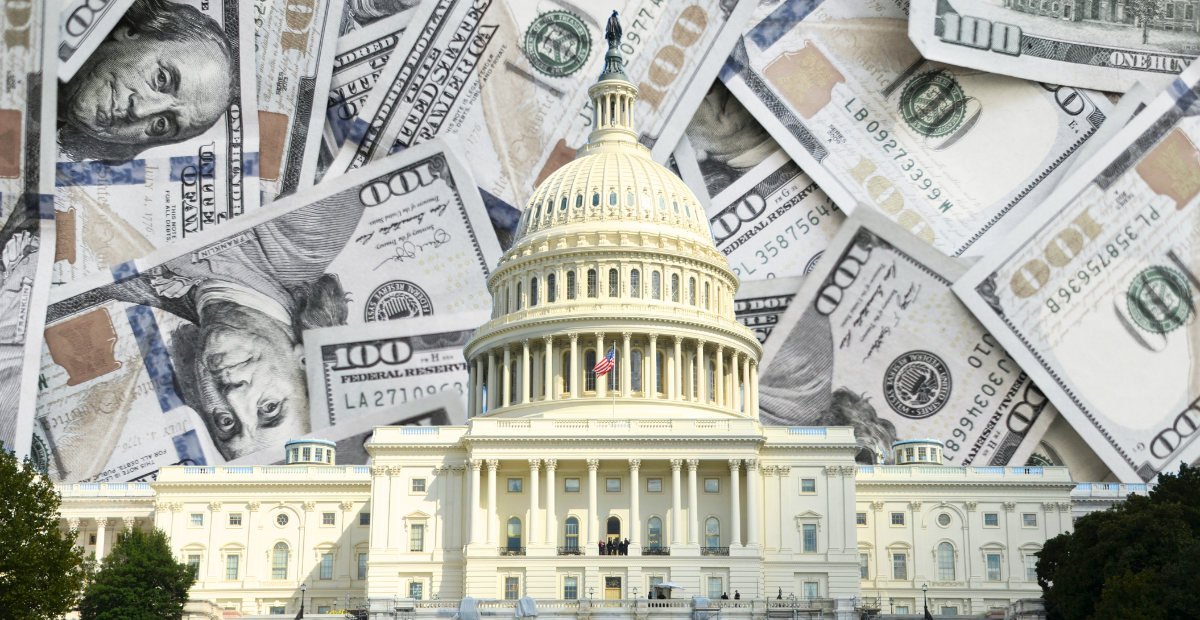SNAP Participants Set To Receive More Amid Shutdown Than Previously Announced
on Nov 06, 2025

Partial SNAP Funding In November Rises From 50% To 65%
With approximately 42 million people participating in SNAP, or the Supplemental Nutrition Assistance Program, the longest government shutdown in American history has had a more significant impact on the public than previous shutdowns.
Failure by the Senate to agree on how to reopen the government on 14 different occasions since October 1 has led to the shutdown exceeding the previous record held for longest shutdown: 35 days.
As the end of the first month of the shutdown approached, two federal judges ruled on October 31 that funding for SNAP must continue amid the shutdown through the use of federal contingency monies.
Generally, households participating in SNAP earn under $32,000 annually.
Responding to this President Donald Trump doubled down on his claim that this is the “Democrat Shutdown,” writing on Truth Social, “I do NOT want Americans to go hungry just because the Radical Democrats refuse to do the right thing and REOPEN THE GOVERNMENT.”
By the afternoon of November 3, the Trump administration had filed in court that it complied with the order to fund SNAP, writing:
“The U.S. Department of Agriculture is complying with the Court’s order and will fulfill its obligation to expend the full amount of SNAP contingency funds today by generating the table required for States to calculate the benefits available for each eligible household in that State.”
This amounted to $4.65 billion in contingency funds utilized to partially cover the program in November, according to NBC News, with participants of SNAP to only receive 50% of their usual allotment of food benefit funds.
However, CNN reported that FNCS Deputy Under Secretary Patrick Penn gave the courts the following update:
“USDA performed further analysis and determined that the maximum allotments need only be reduced by 35%, instead of 50%, to deplete the SNAP contingency fund.”
With only a 35% cut, participants of SNAP will now receive 65% of their food assistance benefits.
Here is what USDA Sec. Brooke Rollins wrote of the disbursement of SNAP funds:
.@POTUS is doing everything he can to help our most vulnerable mothers and babies while Radical Left Democrats continue to obstruct.
— Secretary Brooke Rollins (@SecRollins) November 3, 2025
Today, full November WIC benefits will be disbursed to States.
Additionally, we submitted to the courts our plan to get partial allotments to…
The Shutdown Divide Continues
As of Thursday, November 6, the shutdown is on day 37.
Republican senators have held firm in their proposal of approving a continuing resolution which would resume funding the government on the previous budget, with no changes or additions.
However, the continuing resolution was only designed to continue funding the government through November 21, with the idea being that Senators could debate over a new budget plan leading up to the November 21 expiration.
Presently, Republicans in the House of Representatives have not met to extend the length of the continuing resolution, with Speaker Mike Johnson, R-LA, maintaining hope that the Senate will unite to reopen the government.
For the Democrats, there remains a push for expanding subsidies for the Affordable Care Act, but that measure has also failed to reach the 60 required votes.
On recent votes for the Republican continuing resolution, Republicans have been joined in their near unanimous support of the motion by two Democrats and one Independent: Sen. John Fetterman, D-PA; Sen. Catherine Cortez Masto, D-NV; and Sen. Angus King, I-ME.
With the 2025 election on November 4 over, there is some talk that other Democrats may be more likely to support a plan to reopen the government and resume debate over the budget.
The “Nuclear Option”
Starting on October 30, Trump began pushing for Republican senators to use the “nuclear option” to end the filibuster and allow for a simple majority of 51 votes to approve the continuing resolution.
This has received pushback from many senators, including Senate Majority Leader John Thune, R-SD.
At a breakfast held for Republican senators at the White House on November 5, Trump said:
“It’s time for Republicans to do what they have to do, and that’s terminate the filibuster. It’s the only way you can do it. If you don’t terminate the filibuster, you’ll be in bad shape.”
Were the “nuclear option” to be used, Republicans fear it would be used against the party’s values when it no longer holds the majority in the Senate. Next year’s midterm elections loom large over this concern.
As recently as November 6, Speaker Johnson has insisted that the House of Representatives had done its part in advancing a clean, stopgap continuing resolution to keep the government funded, adding that the 60-vote threshold in the Senate is the only remaining hurdle.
Watch the Trump’s remarks to senators at the November 5 breakfast, here:
This is a developing story.












